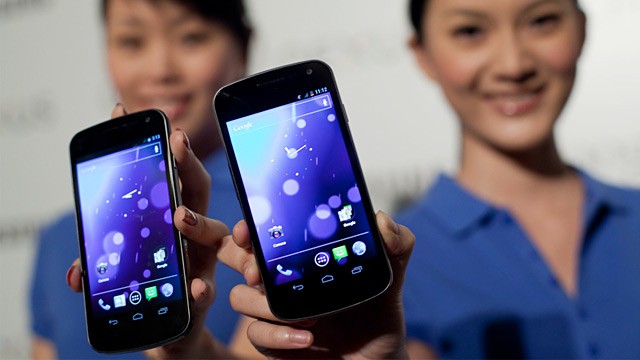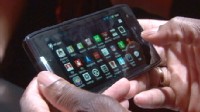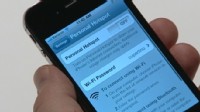
Even from the Samsung Galaxy Nexus lock screen, you get a sense that this Google-backed Android smartphone is going to be different from all those that came before it. The reason: You can unlock the screen by quite literally showing your face.
Facial recognition is one of the cool, if still slightly flawed technologies included as part of Android version 4.0, perhaps better known by its yummy moniker Ice Cream Sandwich. Fortunately, you can rely on PINs and other backup plans when your mug fails to unlock the screen, which in dim light and under other circumstances happens more often than you’d like.
Google and its partners haven’t spilled the beans yet on just when consumers in the U.S. can get their hands on the Galaxy Nexus or what it will cost. Verizon Wireless will be selling a device at launch that will exploit its speedy 4G LTE network. But my test version, provided by Google just a day ago, relied on a T-Mobile SIM card tapping into an HSPA + network. It’s the version, which happens to be compatible with T-Mobile and ATT networks, that Google says will be sold around the world.
Click HERE for More From the ABC News Gadget Guide.
Because I’ve only had the phone such a short time, consider this more of a first look at Ice Cream Sandwich rather than a full-fledged review. I didn’t test battery life (first reaction, it doesn’t seem great) or even make many calls.




Though I want to do a deeper dive, I got a good sense of what Ice Cream Sandwich is all about. And many new features are indeed a welcome treat.
But first, the hardware: Like many of its recent Android predecessors, the phone has a large screen, in this case 4.65-inch so-called Super AMOLED high-definition (1280 x 720) display that looks gargantuan next to the iPhone 4S display. Still the overall phone is quite thin and weighs in about 4.8 ounces, actually a tad lighter than the iPhone.
Inside Galaxy is a fast 1.2 GHz dual-core processor, 1GB of RAM, plus 16GB of internal memory (double that, I’m told, on the LTE version).
There’s a 5 megapixel auto-focus rear camera with flash that can capture high definition video (up to 1080p, though the screen itself display 720p). On the front is a 1.3 megapixel front camera you can use for video calls.
NFC, or near-field communication technology, is also included, meaning you could use the phone to make mobile payments, presumably through Google Wallet.
Google says many but not all current Android apps will be backwards compatible with Ice Cream Sandwich.
This major upgrade to Android brings virtual home, back and recent app buttons that are readily available (but so as not to distract you disappear when you’re say watching video). You can easily add shortcuts and widgets to any of five home screens.
As with the iOS 5 on the iPhone, you can reveal notifications for such things as new e-mail messages or voicemail by swiping down from the top of the screen—unlike the iPhone you can dispense with the notifications you’ve read by flicking them to the left or right.
I appreciate new controls inside settings that help you manage data usage. You can consult color charts that reveal how much data you’re using via cellular and Wi-Fi connections as well as how much data each application is eating up. You can even set a mobile data limit that will disable your mobile data connection when you’ve exceeded that limit.
Article source: http://abcnews.go.com/Technology/samsung-galaxy-nexus-android-smartphone/story?id=14982230




